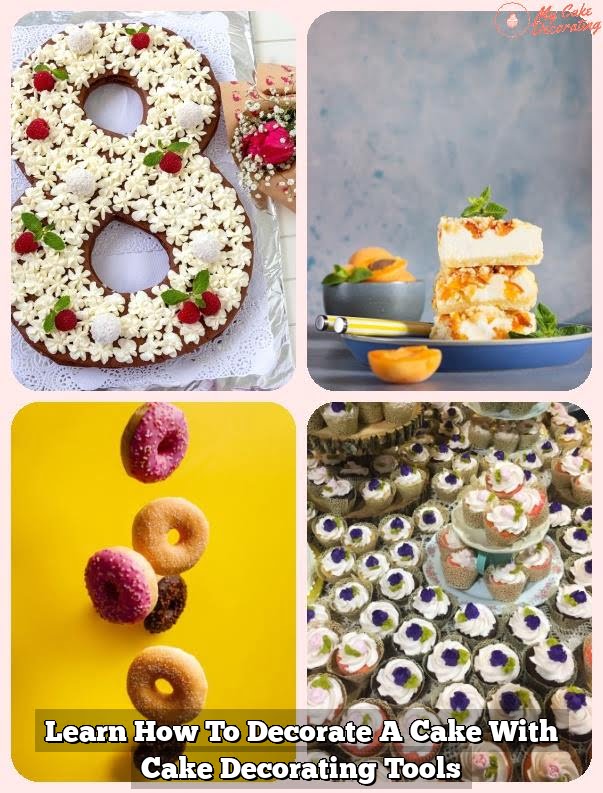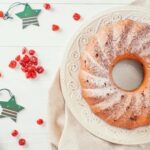Are you wondering how to decorate a horse cake for the next birthday party or special occasion? Horses are beloved animals, and it’s no wonder why they make such a popular theme for cakes.
From their majestic appearance to their association with grace and strength, horses can add a touch of magic to any celebration. In this article, we will explore the step-by-step process of creating a stunning horse cake that will impress both children and adults alike.
Whether you’re an experienced baker or just starting out, decorating a horse cake can be a fun and rewarding experience. With the right techniques and tips, you can transform a simple cake into an eye-catching masterpiece that will leave your guests in awe. From choosing the perfect type of cake to adding intricate details, we’ll cover everything you need to know to create a stunning horse cake that will be the highlight of any event.
In the following sections, we will delve into choosing the right cake base, shaping the cake into a horse silhouette, exploring various frosting and icing techniques, adding detailed features like eyes and manes, as well as troubleshooting common issues. We will also provide inspiration and creative ideas to help you get started on your own horse cake masterpiece. So let’s saddle up and embark on this exciting journey of decorating a horse cake.
Choosing the Right Cake
When choosing the flavor of the cake, it’s important to consider the preferences of the person for whom the cake is being made. Popular flavors for horse cakes include chocolate, vanilla, and red velvet. Additionally, considering any dietary restrictions or allergies among guests is also essential when selecting a flavor.
In terms of size, the size of the cake depends on how many people it needs to serve. A standard size for a horse-shaped birthday cake would be an 8-inch round cake or larger if needed for a bigger party. It’s important to ensure that there is enough surface area to carve out the shape of a horse without compromising its proportions or details.
Special Considerations for 3D Cakes
When creating a 3D horse-shaped cake, it’s important to keep in mind that extra support may be needed to prevent the structure from collapsing under its own weight. Consider using dowels or edible glue between layers if stacking multiple cakes on top of each other, especially if making a larger-sized horse cake.
Working With Fondant vs. Buttercream
When deciding between fondant and buttercream icing, keep in mind that fondant provides a smooth canvas for intricate details and offers more versatility in terms of shaping and sculpting. On the other hand, buttercream has a richer taste and can be airbrushed to create realistic textures on the horse’s coat.
Overall, choosing the right type of cake involves careful consideration of both structural integrity and flavor preferences to ensure a successful outcome when decorating a horse-shaped masterpiece.
Creating a Horse-Shaped Cake
Choosing the Right Base Cake
Before shaping your cake into a horse, it’s important to choose the right base cake. A dense and sturdy cake like pound cake or sponge cake works best for carving and shaping. It’s also essential to ensure that the size of the base cake is appropriate for the desired final size of the horse-shaped cake.
Carving and Shaping Techniques
Start by using a sharp serrated knife to carve the basic shape of the horse from the base cake. Begin with an outline of the horse’s body and head, then gradually carve away sections to create depth and dimension. Use small pieces of leftover cake to add volume where needed. Once you have achieved the basic shape, use a smaller knife or shaping tools to refine details such as legs, ears, and mane.
Proportions and Details
When carving and shaping the horse cake, pay close attention to proportions and details to ensure an accurate representation of a horse. Use reference photos or drawings as a guide for getting the shape of the head, ears, nose, neck, body, legs, and tail just right. Creating realistic proportions will make your horse-shaped cake look more professional and visually appealing.
Frosting and Icing Techniques
When decorating a horse cake, choosing the right frosting and icing is crucial to achieving a realistic horse coat texture and color. There are several options to consider when it comes to frosting and icing, each offering different techniques for creating lifelike details on your horse cake.
- Buttercream: This classic frosting is versatile and easy to work with, making it a popular choice for decorating cakes. Buttercream can be sculpted and shaped to create the look of a horse’s coat, and it can also be tinted with food coloring to achieve the desired color.
- Fondant: Fondant is a smooth, pliable icing that can be rolled out and draped over the cake to create a seamless finish. It’s ideal for creating intricate details such as a horse’s mane, tail, and facial features. Fondant can also be colored using gel food coloring to achieve specific shades required for the design.
- Modeling Chocolate: This type of icing is often used in cake decorating to create sculpted figures and intricate details. It can be shaped into lifelike textures such as fur or hooves on a horse cake. Modeling chocolate can easily be colored by kneading in gel food coloring.
The choice of frosting or icing will depend on the specific design you want to achieve with your horse cake. Each option offers unique benefits in terms of texture, color versatility, and ease of manipulation.
To add depth and dimension to the horse cake’s texture, consider using different frosting or icing techniques such as piping, painting with edible colors, or airbrushing. These methods allow you to create intricate patterns or realistic shading on the surface of the cake that mimics the look of a horse’s coat.
Lastly, experimenting with different frosting tips and tools will enhance your ability to create lifelike textures on your horse cake. Piping bags fitted with various tips allow for more precise application of buttercream or royal icing onto the cake, while shaping tools can help add detail to fondant decorations such as braids in the mane or muscles in the legs.
By exploring different frosting and icing techniques along with utilizing various tools, you can elevate your horse cake from ordinary to extraordinary.
Adding Details
When it comes to decorating a horse cake, adding the right details is crucial in bringing the design to life. Whether you’re creating a simple and elegant horse silhouette or a more realistic representation, paying attention to the eyes, mane, tail, and other intricate details can make all the difference. Here are some key considerations and tips for adding those finishing touches to your horse cake:
- Eyes: Creating realistic eyes can instantly give your horse cake expression and personality. Consider using edible food coloring pens or small fondant pieces to form lifelike eyes.
- Mane and Tail: The mane and tail of the horse are iconic features that should not be overlooked. Utilize buttercream frosting or fondant to sculpt flowing and textured manes and tails that complement the overall look of your cake.
- Hooves: Pay special attention to the hooves of your horse cake, as they are essential for grounding the design. Using chocolate fondant or edible paint can create a polished look for the hooves.
In addition to these key details, there are various edible decorations and supplies that can elevate the appearance of your horse cake. Edible glitter, sugar flowers, and modeling chocolate are just a few examples of items you can use to add dimension and visual interest to your creation.
Remember that attention to detail is what sets apart an ordinary horse cake from an extraordinary one. By carefully considering these elements and using quality edible supplies, you can ensure that your horse cake captures the essence of this noble animal in a delectable form.
Tools and Equipment
Decorating a horse cake requires the right tools and equipment to ensure that the finished product is as realistic and visually appealing as possible. Before starting the decorating process, it’s essential to gather all the necessary items to make the job easier and more efficient. Some of the key tools and equipment needed for decorating a horse cake include piping bags, shaping tools, and food coloring.
Piping bags are essential for applying frosting and icing onto the cake. They come in various sizes and can be filled with different types of frosting to achieve desired textures and details on the cake. Shaping tools such as sculpting knives and fondant cutters are necessary for carving and shaping the cake into a horse silhouette. These tools help in achieving accurate proportions and details on the cake, bringing the horse-shaped design to life.
In addition, food coloring is used to tint frosting, icing, and fondant to create a realistic horse coat color. It is important to have a variety of food coloring options available to achieve different shades of brown, black, or white for the horse’s coat.
Other useful tools include edible markers for adding intricate details, modeling chocolate for sculpting features like eyes and hooves, and silicone molds for creating decorative elements such as flowers or horseshoes. By having these tools and equipment at hand, decorators can successfully bring their horse cake designs to fruition with ease.
Troubleshooting
When decorating a horse cake, there are several common issues and mistakes that may arise. One of the most common problems is the cake crumbling or breaking while carving it into a horse shape. To avoid this, make sure to use a dense cake such as pound cake or mud cake, which will hold its shape better. Additionally, chilling the cake in the refrigerator before carving can make it easier to work with and less likely to crumble.
Another issue that decorators often face is achieving the right texture and color for the horse’s coat using frosting or icing. If you find that your frosting is too runny or not holding its shape, try adding more powdered sugar to thicken it up. For achieving realistic colors, consider using gel food coloring instead of liquid coloring, as it is more concentrated and will not cause the frosting to become too thin.
Additionally, creating intricate details such as the horse’s eyes, mane, and tail can be challenging for some decorators. To make this process easier, consider using pre-made fondant decorations or edible markers to add these finer details. Using templates can also help ensure that these elements are proportionate and well-placed on the cake.
Finally, issues with transportation and storage can arise once the cake is decorated. To prevent smudging or damaging the decorations during transport, consider investing in a specialized cake carrier or box to keep the cake secure. For longer storage times, refrigerate the cake but allow it to come back to room temperature before serving to avoid condensation on the decorations.
| Common Issues | Solutions |
|---|---|
| Cake crumbling while carving | Use dense cakes like pound or mud cakes; chill before carving |
| Frosting too runny or thin | Add more powdered sugar; use gel food coloring for realistic colors |
| Difficulty creating intricate details | Use pre-made fondant decorations; use templates for placement |
| Transportation/storage issues | Invest in specialized carriers; refrigerate but allow to come to room temp before serving |
Inspiration and Ideas
In conclusion, decorating a horse cake can be a fun and rewarding experience, whether it’s for a child’s birthday or a special celebration. By following the step-by-step instructions provided in this article, you can create a stunning horse-shaped cake that will impress your family and friends. From choosing the right cake base to mastering frosting and icing techniques, there are many opportunities to unleash your creativity and artistic skills.
One of the most exciting aspects of decorating a horse cake is the ability to add intricate details that bring the design to life. Whether it’s creating realistic eyes, mane, tail, or using edible decorations for added flair, these finishing touches are what make a horse cake truly stand out. With the right tools and equipment on hand, along with some troubleshooting tips for common issues, even beginners can successfully tackle this project.
Finally, by exploring various horse cake designs and creative decorating ideas, you can find inspiration for your own unique masterpiece. Whether you prefer a traditional look or want to experiment with bold colors and patterns, the possibilities are endless when it comes to decorating a horse cake.
So don’t be afraid to let your imagination run wild and have fun with the process – after all, creating a memorable and visually stunning dessert is just as important as its delicious taste.
Frequently Asked Questions
How to Make a Horse a Cake?
Making a horse-shaped cake requires creativity and patience. Start by baking a rectangular or oval cake as the base, then use a knife to carve out the shape of a horse’s head and neck. Use the extra cake scraps to sculpt ears and a muzzle.
Once the basic shape is done, cover the entire cake with brown or black icing. Use fondant or frosting to add details such as the eyes, mane, and nostrils. A few simple adjustments can turn an ordinary cake into a charming horse-shaped creation.
What Can I Use Instead of Icing?
Instead of traditional icing, consider using whipped cream for a lighter option. Whipped cream can be sweetened with powdered sugar and flavored with vanilla or other extracts.
Ganache, which is made from chocolate and heavy cream, can also be used as an alternative to icing for a richer and more decadent flavor. Another option is using fruit preserves or jams to spread on the cake for both flavor and decoration.
How to Decorate a Cake for Beginners?
Decorating a cake as a beginner can seem daunting, but it doesn’t have to be complicated. Start by smoothing a layer of icing over the entire cake using an offset spatula. Piping bags fitted with different tips can create simple designs like stars, dots, or lines on top of the cake.
Using fresh fruits, edible flowers, or sprinkles can add color without requiring any special decorating skills. As you gain confidence, you can experiment with more intricate techniques such as fondant decorations or buttercream flowers. Just remember that practice makes perfect!

Welcome to my blog about home and family. This blog is a place where I will share my thoughts, ideas, and experiences related to these important topics. I am a stay-at-home mom with two young children. I hope you enjoy reading it! and may find some helpful tips and ideas that will make your home and family life even better!





